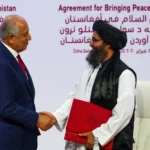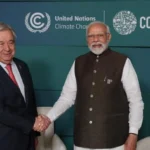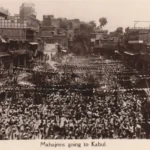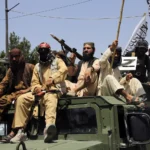How the Arabian Raj Was Forgotten – and Why It Matters Today
In Shattered Lands: Five Partitions and the Making of Modern Asia, Sam Dalrymple offers a masterclass in rewriting the known and often over-simplified history of South Asia and its surrounding regions. His debut in the world of history and writing, is not just this book. It’s the historical reckoning which he demonstrated through such investigative and detailed history of South Asia.
As a matter of fact, Shattered Lands is nothing short of revelatory. Sam Dalrymple, son of the acclaimed historian William Dalrymple, whose writing tells much about his lofty aspiration for history and discovering the truth, steps out of his father’s shadow with a debut that is bold, deeply researched, and emotionally resonant. If William chronicled the splendours and follies of empire, Sam excavates its aftershocks especially in the forgotten corners of the Arabian Raj.
Where most popular narratives obsess over the 1947 Partition as a singular rupture, Dalrymple insists that we zoom out and look at the five partitions that truly carved up the subcontinent and the Gulf: Burma’s exit in 1937, Aden’s separation the same year, the breakaway of Gulf protectorates in 1947, the princely states’ integration into India and Pakistan, and finally, the secession of East Pakistan in 1971. Each was a moment of geopolitical amputation, leaving behind human scars that have never truly healed.
Did You Know Doha and Dubai Were Once Part of India?
That’s not hyperbole. Under the Interpretation Act of 1889, places like Muscat, Doha, and Dubai were legally part of British India. Until the 1940s, the Viceroy of India effectively governed large swathes of the Arabian Peninsula. Omani ports, Qatari sheikhdoms, and Emirati deserts were entwined with Indian rupees, Indian soldiers, and Indian-administered political systems. The Gulf today may feel worlds apart from the subcontinent, but Dalrymple uncovers a time when these lands were deeply connected: economically, politically, and even culturally.
He even reveals how the standard list of Indian princely states once began with Abu Dhabi. And how Oman was considered as Indian as Kalat or Las Bela. That’s the kind of forgotten connection Shattered Lands brings back to life, brick by archival brick.
History with Heart – and Teeth
Junior Dalrymple’s writing is electric, vivid, cinematic, and often poetic. His words illuminate dusty colonial corridors and borderlands alike. Whether he’s recounting how Hyderabad’s fall shook the Arab-Indian identity, or how a young Naga soldier saw himself as “a Naga first, a Naga second, and a Naga last”, Dalrymple doesn’t just narrate history, he seems to feel it.
This is not the grandeur of empire; this is the wreckage of disintegration. His focus isn’t on conquest but collapse, on what happens when imagined geographies harden into barbed wires, and when once-fluid cultures are cut by state lines.
The colonial system, Dalrymple shows, had its brutalities but also a certain messy cosmopolitanism. In contrast, modern nationalism, whether Indian, Pakistani, Arab or Burmese, was often bloodier and more exclusionary. As Gulf states defined citizenship by “a fair knowledge of Arabic”, thousands of South Asians who had lived there for generations were disenfranchised. Meanwhile, Arab identity, once seen as part of India’s fabric, was scrubbed out following Hyderabad’s annexation.
A Reminder for Today’s Fractured Times
While going through the tales of dashed convulsions joint together by the author, Dalrymple doesn’t write in the abstract. His history directly challenges the myths being peddled across South Asia today, by regimes eager to sanitize textbooks, erase Muslim contributions, or pretend that current borders were always set in stone. His work is timely, especially when a throwaway line from a world leader, like Trump’s claim that India and Pakistan have been fighting for “a thousand years” can shape public opinion with zero historical grounding.
In truth, these divides are neither ancient nor inevitable. They were drawn in colonial committee rooms and wartime backrooms. They are recent, man-made and still bleeding for every nationality in the region.
Apace with all the details deeply evocative and rich in historical storytelling, the book occasionally seems to sacrifice nuance for narrative flow. At times, it glosses over complex political realities and presents a somewhat selective version of history, leaving out alternative voices and deeper analysis of present-day dynamics. This makes the book more compelling as a story than as a comprehensive guide to the region’s ongoing challenges.
Decisively, “Shattered Lands: Five Partitions and the Making of Modern Asia” is not just a chronicle of fractured borders, but a haunting reminder that the ghosts of partition still walk among us, shaping politics, identities, and the very idea of belonging in South Asia today.







